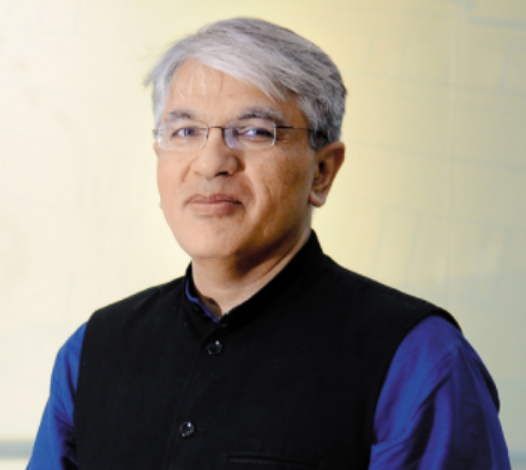Regulating education: Unlike corporates, older the universities, better the quality

A Joint Byline by Janat Shah and Manish Sabharwal in Financial Express talks about how the differential impact of longevity on companies and varsities has important implications for education regulation.
Poet Alfred Tennyson said in Morte d’Arthur, “The old order changed, yielding place to the new and God fulfils himself in many ways lest one good custom should corrupt the world”. Tennyson’s wisdom is obvious in the brutal effect of age on companies; 90% of the first Fortune 500 list of 1955 and 75% of companies of the BSE Sensex 30 companies of 1991 are no longer on those lists. But universities seem different from companies. The youngest institution in the Top 10 global universities in 125 years old and only 4 institutions in the Top 100 are less than 40 years old. We would like to make the case that this differential impact of age on companies and universities has important implications for education policy.
Relentless creative destruction is good for the economy; the 1991 economic reforms are significant for India because they made political connections and regulatory arbitrage less important than courage, sweat, and wits and, thereby, increased churn. Age is tough on companies for many reasons. First is the Innovators’ Dilemma popularised by Clayton Christenson; companies that have huge cash-flows from products or markets are often unwilling or unable to change their successful operating models in ways that lead to short-term disruptions of those cash-flow.
Second, age leads to arteries hardening; cholesterol builds up and bureaucracies develop the status quo bias of “anybody can say no but nobody can say yes”. The third and probably most fatal flaw is a shift in consumer preferences; consumers don’t want their products because competition is offering something that is better, faster, cheaper, or just different.
Age is more complicated for universities. Global experience suggests that building a world-class university is the work of decades. Of course, it is hard to deny the costs of age—the decline of Allahabad University, Santiniketan and Calcutta University are obvious examples—or the few examples where new universities have catapulted to the top (ISB and Ashoka University piggybacked on the reputations of founders, faculty or old foreign institutions). On balance, age is probably good for universities for three reasons. First is the chicken-and-egg problem of establishing reputation and attracting good faculty. Software trumps hardware but a reputation takes time to build. Second is the alumni pool; a larger, diverse, and senior alumni pool improves the odds for universities to gain recognition, resources, and goodwill ambassadors. Third, and probably the most important, is that it takes time for processes to start flowing in their full glory. Muscle memory for flawless teamwork, curriculum, research, administration, and much else needs recognising the plane crash approach to quality (the only way to improve air traffic safety is to have plane crashes because if we knew something that would make things better, it would already be built in).
Since 80% of India’s higher education and skill capacity of 2050 is yet to be built, the longevity insight has important implications for education policy. First, geography matters; the accelerating divergence in the last few decades between IITs in Mumbai & Delhi and Kanpur & Kharagpur reflects the economic complexity just outside their gates. So, it is better to bring students to education rather than take education to students. Second, education regulators must stop confusing university buildings with building universities and focus on outcomes rather than inputs; they must remember Harvard professor Lant Pritchett’s warning to not confuse the accounting of accountability (did you follow process or checklist) with the account of accountability (did you do the right things).
Third, government funding must learn about time horizons from small countries like Hong Kong, Singapore and Korea that have parachuted young universities in the Top 100. A 20-year-plan is not 10 two-year-plans. Third, regulators must stop thinking about failure as a problem; the divergent destiny of engineering education (30% empty capacity out of 15 lakh seats and 30% of colleges expected to shut down) and medical education (only 37,500 doctors with massive capitation fees) shows how India is better off with more open entry and exit that encourages a number of genetically diverse statistically independent tries. Fourth, institutions and their board should take a human capital view of faculty, e.g., one model could be that for the first eight years of career, a faculty member must focus on research and teaching output (helped by mentoring and collaboration), next eight years on research and teaching productivity (through doctoral students and application expertise), and finally, eight years of exploitation of application expertise (via books, mentoring, and external engagement).
Finally, a relentless focus on governance—the allocation of decision rights—is crucial to building enduring institutions. The relative role of government, founders, funders, faculty, alumni and regulators needs to be continuously renegotiated. In the current Indian context needs a radical reboot because the most visible impact of good governance is institutional culture and values which are often hard to set with the regulatory drive towards standardisation. It is also clear that governance will be most effective is we unpack the role of the government as a regulator, service provider and policy maker. Regulators making policy not only stifles risk taking and innovation but creates a culture of differential standards.
The acceleration of creative destruction in corporate India since 1991 (companies with 80% of the market cap then are now less than 20%) has been wonderful for India’s growth, productivity, social mobility, and economic complexity. Without hindering competition, we need to recognise that universities that are world-class are almost always universities that are old. So, we need to figure out how to blunt bad ageing and amplify good ageing. Policy-makers need to slow down and take the long view because the best universities echo the wisdom of poet Robert Browning: “Grow old with me for the best is yet to be”.
—
This article was published in Financial Express: https://goo.gl/eog2Tb
Latest Blogs
Test Post
ecrvbtbtbybybyb ddecececec edececece edecece h1 tag h2 tag h3 tag h4 tag h5 tag h6 tag lsit 1 list 2 list 3 wsmw swwww efgh...
Read MoreRevitalizing and Transforming Manufacturing Sector in India
Challenges Confronting India's Manufacturing Marvel Inadequate Tech-Based Infrastructure:The enhancement of competitiveness in the manufacturing sector relies heavily on innovation-driven infrastructure, particularly in areas such as...
Read MoreTemporary Jobs Sees a Spike During Festive Hiring
The seasonal hiring landscape becomes more competitive A wider set of organisations is increasing the demand for temporary jobs. Employers looking to fill seasonal roles...
Read MoreThe Road Ahead: India’s FMCG Industry, Sector and Market Insights
Primary Forces Behind the Expansion of the FMCG Sector The Development of E-Commerce: The technological revolution impacted India's urban and rural areas. There has been...
Read MoreCurious Case of Educated Unemployment Problem in India
Key factors contributing to India’s joblessness Population growth vs. job creation Quality of education Skill gap Job mismatch Economic slowdown Preference for government jobs Why...
Read More






